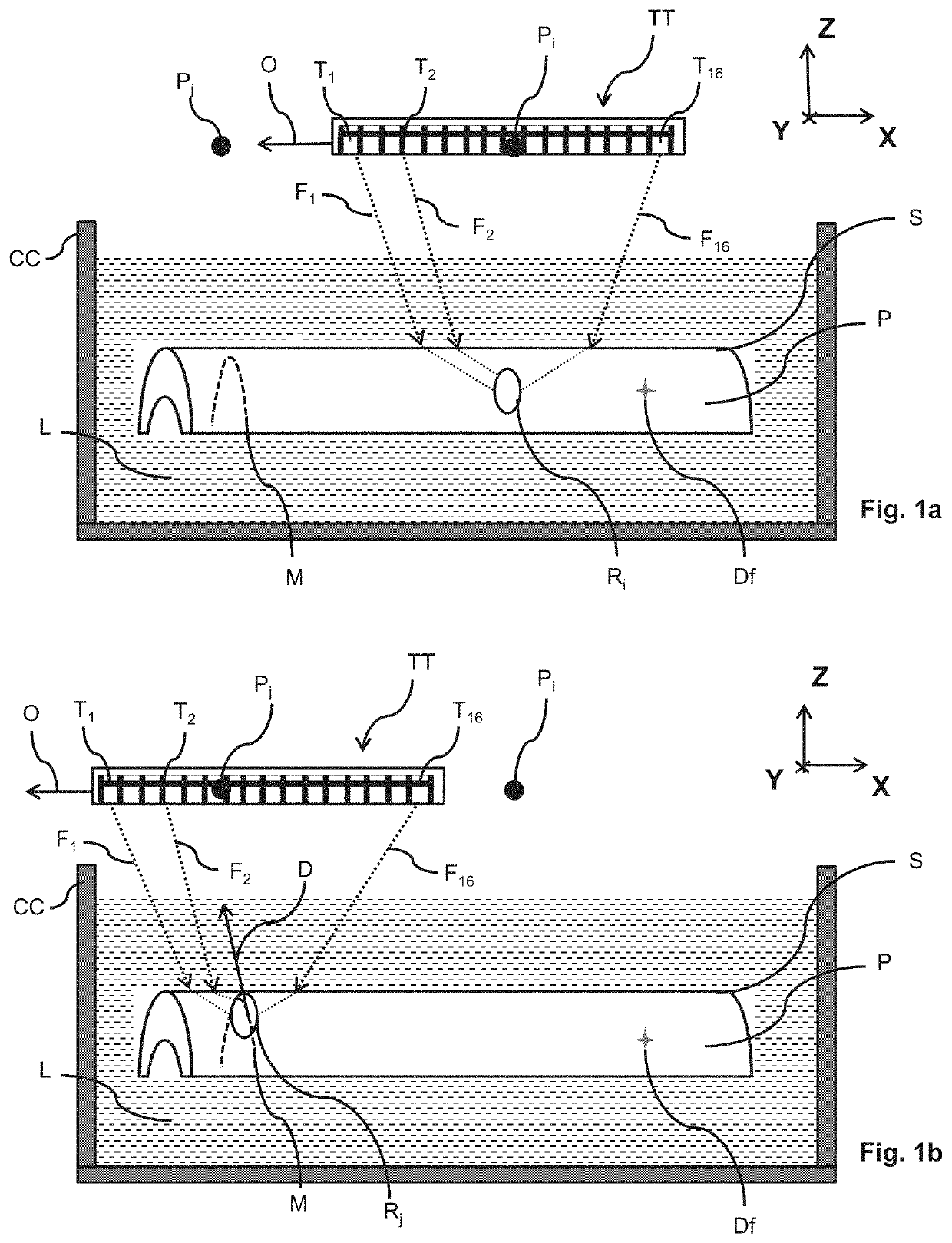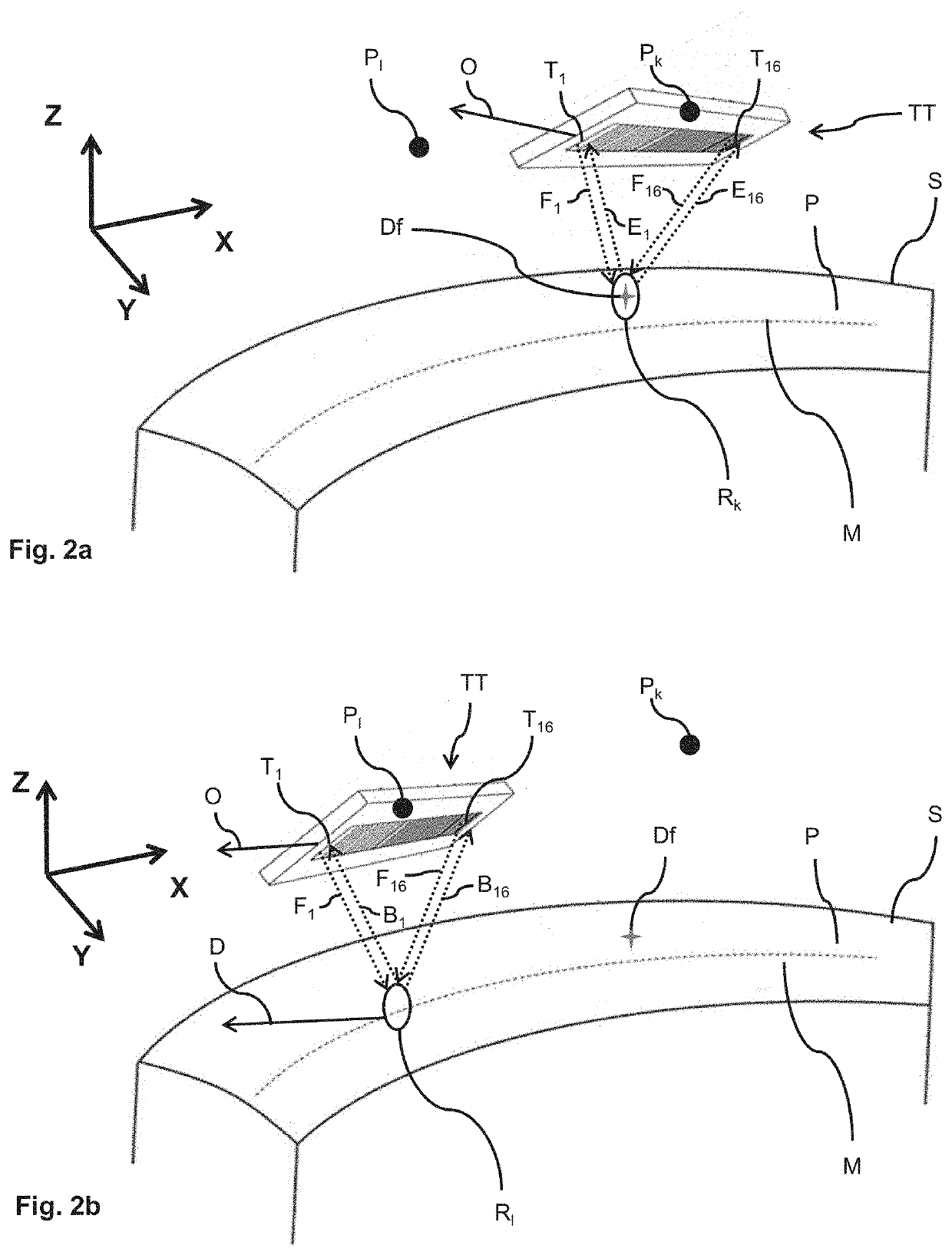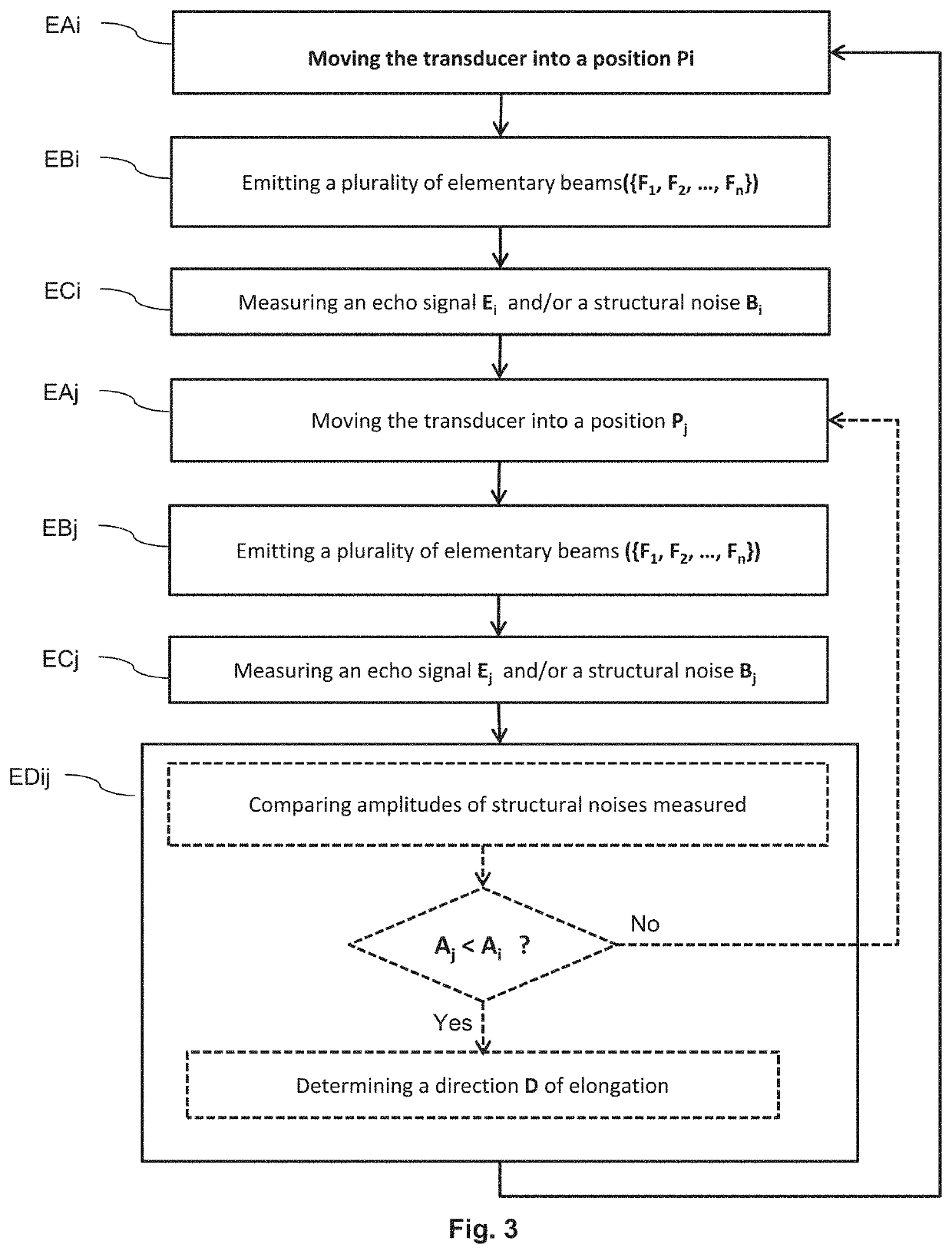Multielement method and device for testing parts with ultrasound
a multi-element, part technology, applied in the direction of measuring devices, analysing solids using sonic/ultrasonic/infrasonic waves, instruments, etc., can solve the problems of not being able to detect an elongated microstructure, elongated microstructure produces a noise, and masks some signals, so as to achieve the effect of minimising the structural nois
- Summary
- Abstract
- Description
- Claims
- Application Information
AI Technical Summary
Benefits of technology
Problems solved by technology
Method used
Image
Examples
Embodiment Construction
[0055]Below in the description, elements having a design, or identical, similar or comparable functions will be designated by the same reference.
[0056]FIGS. 1a, 1b, 2a and 2b represent schematic views of a method for non-destructively testing a part P using a linear transducer TT according to an embodiment of the invention. In the examples represented, the part P comprises an elongate microstructure M and a defect Df which is located under a surface S of said part P. Furthermore, the part P is a titanium-forged billet, of cylindrical shape, which comprises an internal anisotropic structure leading to an elongate microstructure M along a direction D.
[0057]In a non-limiting manner, the part P can be any type of part, shape and composition. For example, the part P can be a metal part, a composite material part comprising metal fibres, or also a part comprising a single-directional reinforcement oriented along a direction. According to other examples, the part P can be an axisymmetrical...
PUM
 Login to View More
Login to View More Abstract
Description
Claims
Application Information
 Login to View More
Login to View More - R&D
- Intellectual Property
- Life Sciences
- Materials
- Tech Scout
- Unparalleled Data Quality
- Higher Quality Content
- 60% Fewer Hallucinations
Browse by: Latest US Patents, China's latest patents, Technical Efficacy Thesaurus, Application Domain, Technology Topic, Popular Technical Reports.
© 2025 PatSnap. All rights reserved.Legal|Privacy policy|Modern Slavery Act Transparency Statement|Sitemap|About US| Contact US: help@patsnap.com



